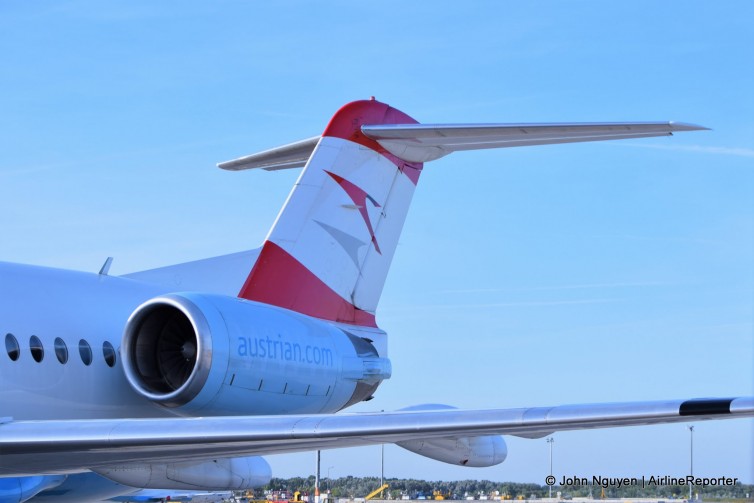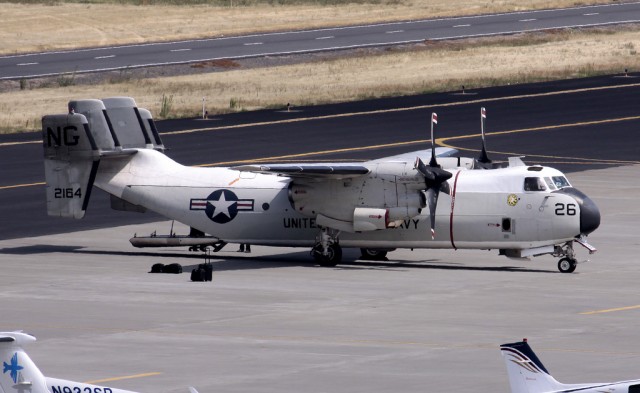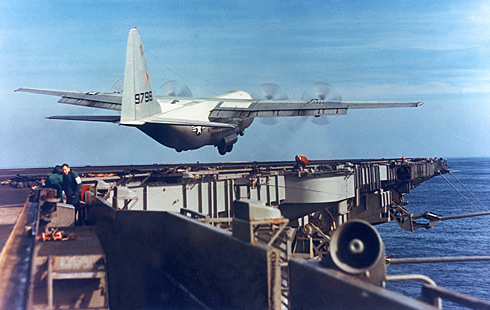
OE-LVN, an Austrian Airlines Fokker 100 parked at VIE
Previously: Flying Economy on a Turkish Airlines Airbus A321
The second leg of our honeymoon tour around Europe took us from Vienna to Budapest on board a plane that brought back lots of childhood memories, the Fokker 100. I flew in F100s extensively when they were part of American’s fleet, always looking forward to being able to say “Fokker” without getting in trouble. Little did I know that I might have taken my last flight ever on any Fokker (*snicker*)…

The ubiquitous C-2 that the has become a welcome sight on carrier decks – Photo: Paul Carter
Since 1966, the United States Navy has employed the venerable Grumman C-2 Greyhound as its main source of supplying their fleet of nuclear-powered aircraft carriers with a vital connection to the outside world. Known as the CODs (for Carrier Onboard Delivery), these aircraft transport personnel, spare parts, mail, and other necessities to the carriers from land.
The C-2, based on the Grumman E-2 Hawkeye AWACS platform, can carry up to 26 passengers or 10,000 pounds of cargo to and from an aircraft carrier. The mission of the C-2 has been considered one of the most important in the operations of an aircraft carrier. With the first of 17 C-2s delivered in 1966, and the last in 1968, by the early 80’s, the fleet was beginning to show its age and limitations.

KC-130 flown by Lt. Flatley departs the USS Forrestal after one of its 21 landings – Photo: US Navy
So, what does the C-2 have to do with airliners? In the early 1980’s, the US Navy put out a request for a new COD aircraft through the MMVX program. Various manufacturers tendered proposals, including Grumman, with an improved version of the C-2. Lockheed offered a new, turbofan design derived from the S-3 Viking, and a few unusual proposals.
Fokker Aircraft, of the Netherlands, proposed a derivative of their successful F28 regional airliner, called the F28 Mk.5000. McDonnell Douglas proposed a navalized version of the venerable DC-9-10 airliner, and lastly, it appears as if Boeing proposed a carrier modification of the 737-200. While it might seem odd operating an aircraft the size of an airliner off of the small flight deck of an aircraft carrier, the concept was proven as possible nearly 20 years before the start of the MMVX program.
In November 1963, the Navy conducted tests to see if the idea of a ’œSuper COD’ was possible. These dramatic tests saw a crew, led by Lt. James Flatley, land a KC-130 on the deck of the USS Forrestal 21 times with no tailhook, and take off with no catapult assistance. These tests, while a success, proved that the C-130 was too large of an aircraft to routinely operate off of a carrier, and the Navy in the end procured the C-2.
For this story, I want to take a closer look at the proposed airliners which were made to handle carrier operations.


